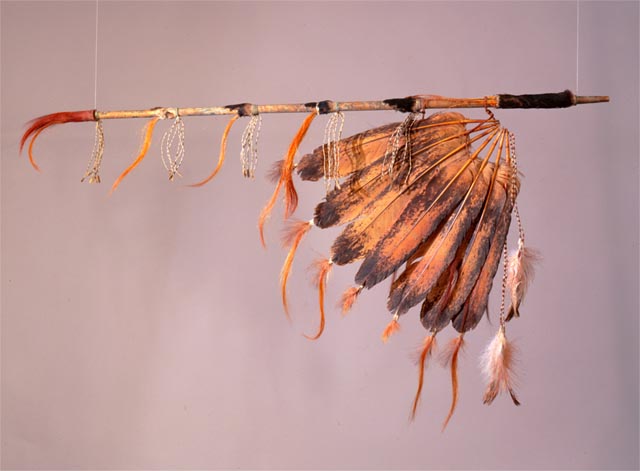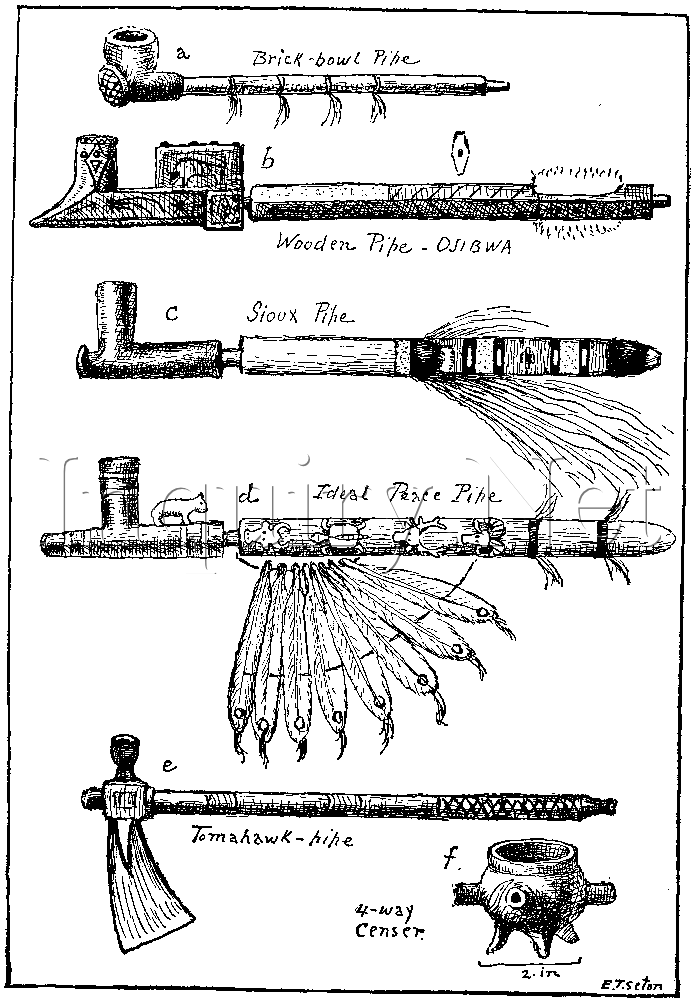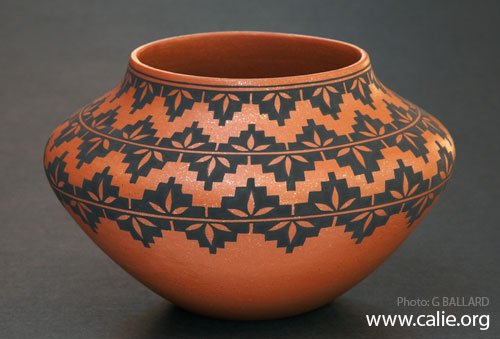Totem Poles
Totem poles are monumental sculptures carved from large trees, mostly Western Red Cedar, by cultures of the indigenous peoples of the Pacific Northwest Coast of North America. The word totem is derived from the Ojibwe word odoodem, "his kinship group".
The meanings of the designs on totem poles are as varied as the cultures that make them. Totem poles may recount familiar legends, clan lineages, or notable events. Some poles celebrate cultural beliefs, but others are mostly artistic presentations. Certain types of totem poles are part of mortuary structures, and incorporate grave boxes with carved supporting poles, or recessed backs for grave boxes. Poles illustrate stories that commemorate historic persons, represent shamanic powers, or provide objects of public ridicule.
Source // Wikipedia
Source // totem-pole
BEADWORK
Source // iSchool
Source // CSDT
Source // FBP
Source // Spirit Lekever
DREAMCATCHERS
In Ojibwe (Chippewa) culture, a dreamcatcher (or dream catcher; Lakota: iháŋbla gmunka, Ojibwe: asabikeshiinh, the inanimate form of the word for "spider"[1][2] or Ojibwe: bawaajige nagwaagan meaning "dream snare"[2]) is a handmade object based on a willow hoop, on which is woven a loose net or web. The dreamcatcher is then decorated with personal and sacred items such as feathers and beads.
While dreamcatchers originated in the Sioux Nation, with relics found dating as far back as 700 AD, they were adopted by Native Americans of a number of different nations. Some consider the dream catcher a symbol of unity among the various Indian Nations, and a general symbol of identification with Native American or First Nations cultures. However, other Native Americans have come to see dream catchers as over-commercialized.[3] Non-Indians have also used the dreamcatcher for their own purposes.
Traditionally, the Sioux construct dreamcatchers by tying sinew strands in a web around a small round or tear-shaped frame of willow (in a way roughly similar to their method for makingsnowshoe webbing). The resulting "dream-catcher", hung above the bed, is used as a charm to protect sleeping children from nightmares. As dreamcatchers are made of willow andsinew, they are not meant to last forever but are intended to dry out and collapse as the child enters the age of wonderment.[citation needed]
The Souix believe that a dreamcatcher changes a person's dreams. According to Konrad J. Kaweczynski, "Only good dreams would be allowed to filter through… Bad dreams would stay in the net, disappearing with the light of day."[4] Good dreams would pass through and slide down the feathers to the sleeper.
Source // Wikipedia
Source // gstatic
Source // WeHeartIt
PEACEPIPES
"Calumet" is a Norman word, first recorded in David Ferrand's la Muse normande around 1625 - 1655. Its first meaning was "sort of reeds used to make pipes", with a wrong spelling forcalume(l). It corresponds to the French word chalumeau 'reeds' (Modern French also 'straw', 'blowlamp'). Then, it was said by Norman-French settlers in Canada to describe the ceremonial pipes they saw in use among the First Nations people of the region.[1] The name came into English-language usage as a general term for a ceremonial pipe, though in the cultures in question it is more common for a culturally-specific term to be used.
Calumets and other Native American ceremonial pipes have often been given the misnomer, "peace pipe"; this is a European construct based on only one type of pipe and one way it was used. Various types of ceremonial pipes have been used by multiple Native American cultures, with the style of pipe, materials smoked, and ceremonies being unique to the distinct religions of those Nations.
In ceremonial usage, the smoke is believed to carry prayers to the attention of the Creator or other powerful spirits. Lakota tradition has it thatWhite Buffalo Calf Woman, brought the Chanunpa to the people, and instructed them in its symbolism and ceremonies.
According to oral traditions, and amply illustrated by pre-contact pipes in museums and tribal and private holdings, some ceremonial pipes are adorned with feathers, fur, human or animal hair, beadwork, quills, carvings or other items having significance for the owner. Other pipes are very simple. Many are not kept by an individual, but are instead held collectively by a medicine society or similar ceremonial organization.
Before the development of lighter cigarette tobacco, the smoke was too harsh to be inhaled traditionally by Native Americans in ceremonial use. Today in most peace pipe ceremonies the smoke is not inhaled.[3]
Source // Wikipeida
Source // Inquiry
Source // HTGB
CLAY POTTERY
Native American pottery is an art form with at least a 7500-year history in the Americas.[1] Pottery is fired ceramics with clay as a component. Ceramics are used for utilitarian cooking vessels, serving and storage vessels, pipes, funerary urns, censers, musical instruments, ceremonial items, masks, toys, sculptures, and a myriad of other art forms.
Due to their resilience, ceramics have been key to learning more about Precolumbian indigenous cultures.
Source // Wikipedia
Source // Cakitches















Leave your comment